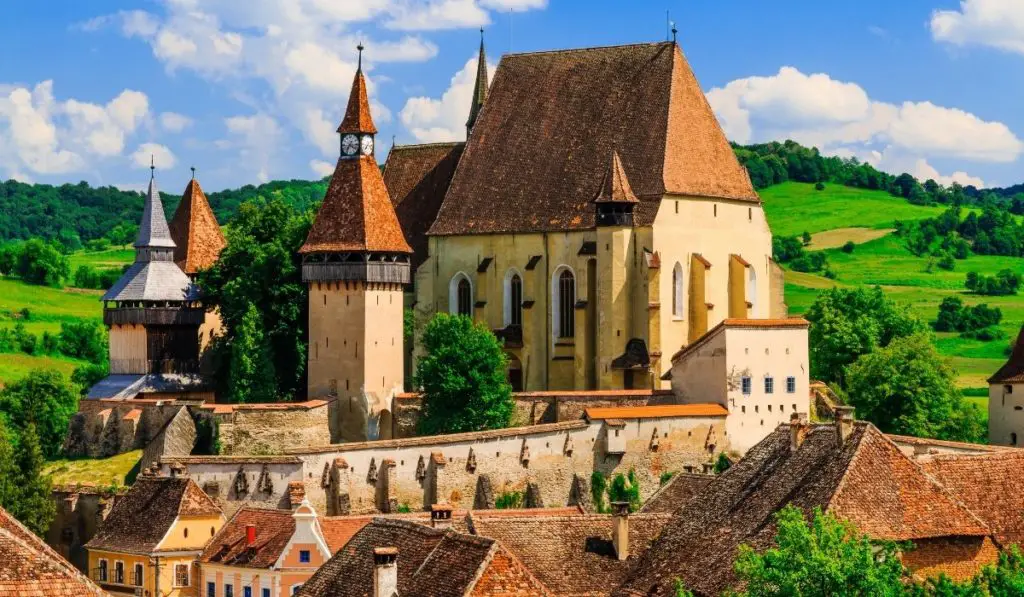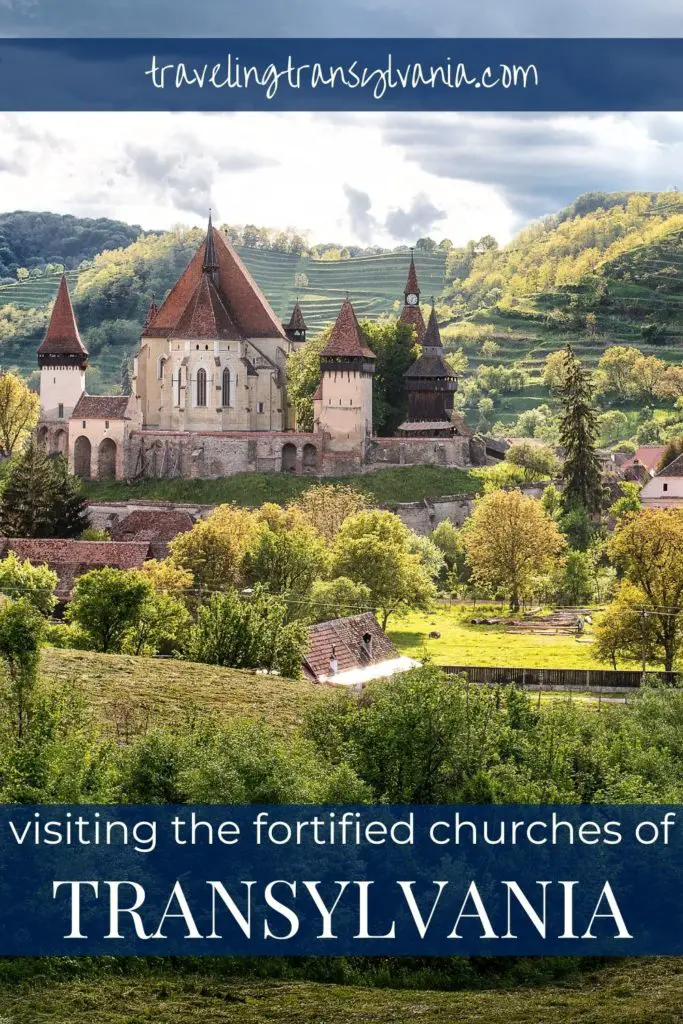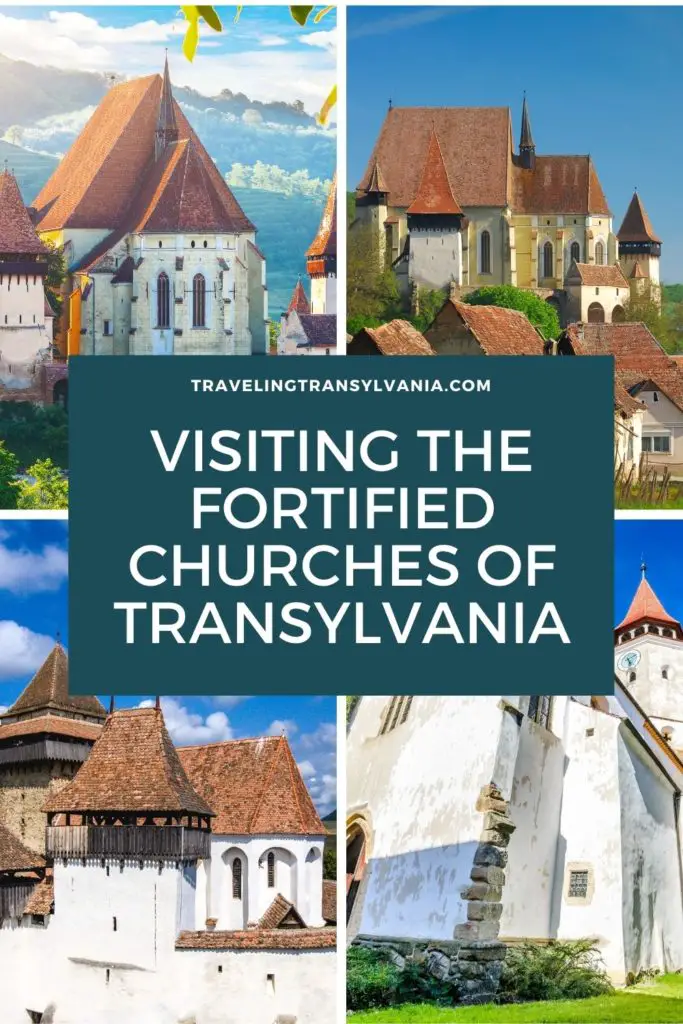This post may contain affiliate links. At no cost to you, purchases made through these links may result in a small commission for Traveling Transylvania. We never recommend products that we don’t know and trust. Thank you for your continued support!
If you’re interested in history, culture, and ancient architecture, then visiting the fortified churches of Transylvania is definitely one of the best things to do in the region. Only seven of the region’s hundreds of fortified churches made the cut to be included on the exclusive list of UNESCO World Heritage Sites. Check out this guide on how and when to visit, admission information, and other pertinent information on seven of Transylvania’s prized jewels.
history of the fortified churches of transylvania
The history of the fortified churches of Transylvania begins with the German settlers arrival and the establishment of the Saxon villages in the 12th century. The German-Saxons established strong networks of artisans, farmers, and merchants within the villages and enjoyed special status in the area.
However, because the area was under constant threat from Ottoman and Tatar takeovers, fortifications were a necessity. In the most important areas, the entire town was fortified. But in smaller villages, fortifications extended only to the church.
Due to both the region’s topography and for security purposes, the Saxon villages were very compact. The church was always the focal point of the village, and was usually positioned in a defendable location in the village center. On top of a hill, for example.
The Saxons used a number of different fortification methods. Some of the most popular included enclosing walls of varying sizes, rows of fortifications in front of the church, observation and belfry towers. Villagers sometimes added defense towers and storehouses to the fortifications in order to withstand longer sieges.
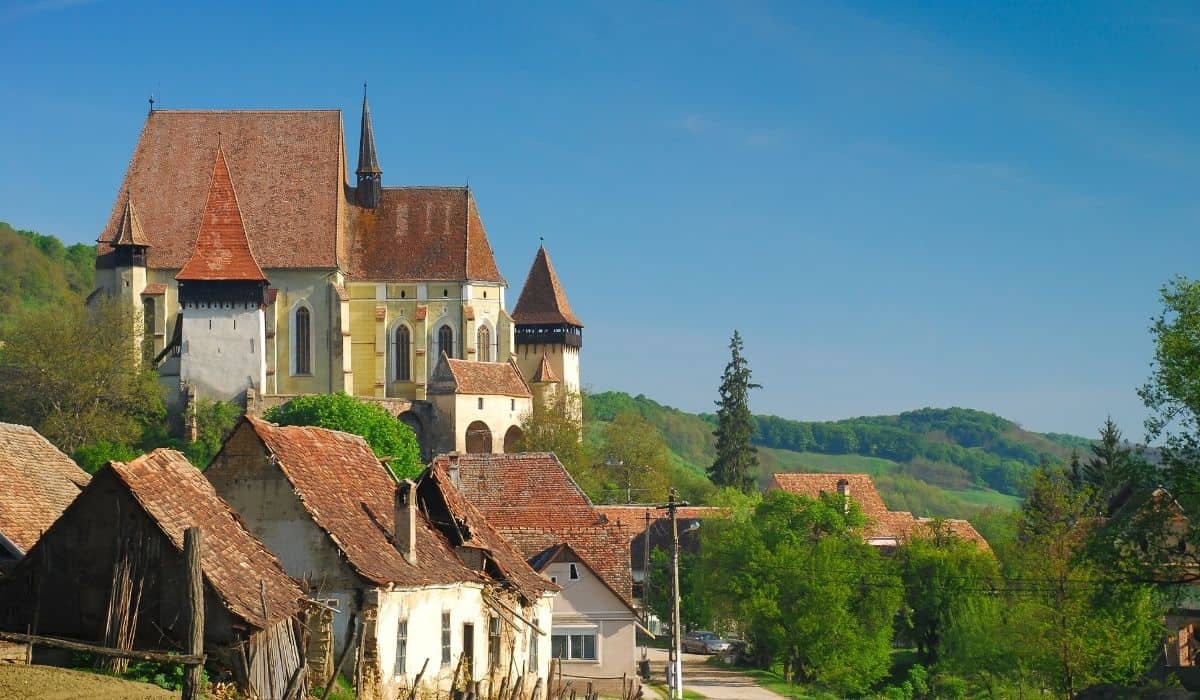
unesco world heritage status
There were originally over 300 fortified churches in Transylvania! Today, over 150 remain standing. Only seven of them have made it to the exclusive status of UNESCO World Heritage Site! The churches were inducted into the prestigious designation in 1993 and have enjoyed a steady stream of tourists ever since. Visiting the Fortified Churches is one of the top things to do in Romania.
Looking for something else to do? Be sure to check out the gorgeous castles of Transylvania.
how to visit the fortified churches of transylvania
The UNESCO fortified churches of Transylvania are mostly concentrated in southeastern Transylvania, making it easy to visit them all. We recommend visiting in the order we have listed below OR in reverse.
Where you begin is going to depend on your city of origin. Do you want to get the long portion of the drive out of the way at the beginning or at the end of your trip? We began in Cluj-Napoca and visited Prejmer first, being the farthest away. From Prejmer, we visited in the order listed below.
If you prefer to save the long drive for the end and are coming from Cluj, start at Câlnic and end at Prejmer. The trip can be as long or as short as you wish, stopping anywhere for an overnight stay. It is possible to cram them into one day, but it won’t be very relaxing. Two days gives ample time to drive, explore the villages, stop at your leisure, and enjoy some good food as well.
If you begin in Brașov, Prejmer will be closest to you and Câlnic will be the farthest.
Insider Tip: Between Prejmer and Viscri, be sure to check out Rupea Fortress!
Check out the map to plan your ideal route!
seven fortified churches of transylvania
1. prejmer
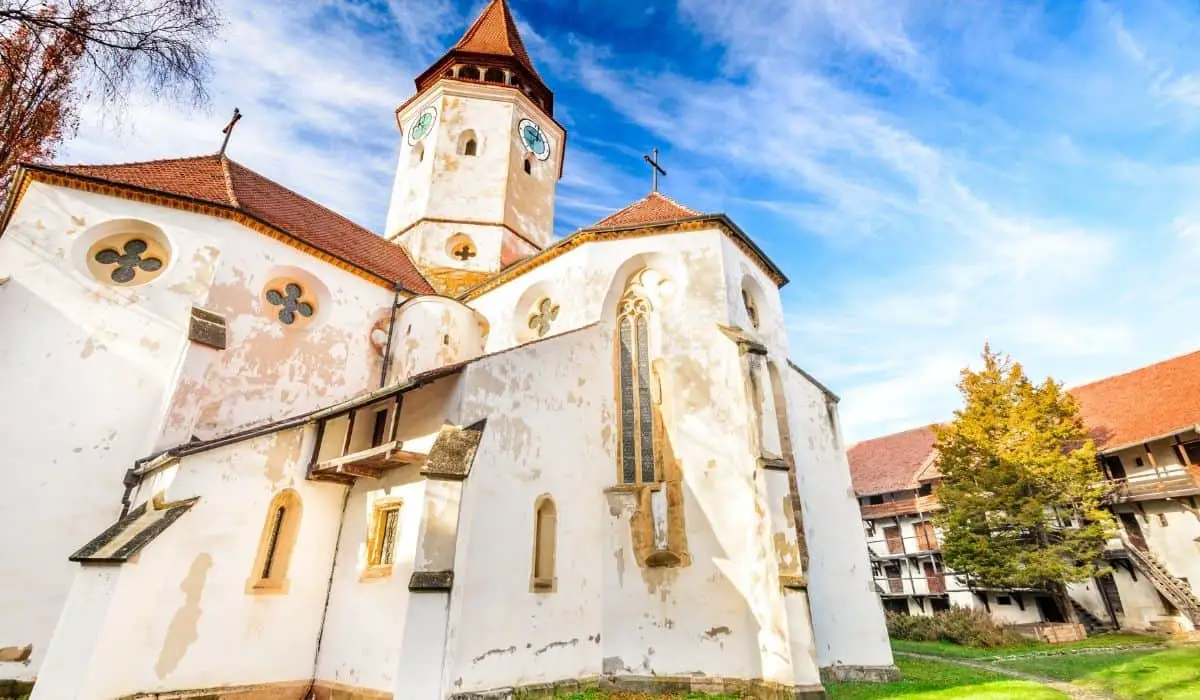
Prejmer is not only the largest fortified church in Transylvania, but the largest in all of southeastern Europe! Teutonic Knights built Prejmer in the early 13th century.
According to records, over the course of its 500 year life, Prejmer was besieged no fewer than 50 times! It was captured just once in the 17th century, by a Transylvanian prince. Allegedly the defenders had to surrender after going several days with no water to drink.
Some of Prejmer’s defining features include numerous drawbridges, hidden passageways, a moat, and thick defense walls.
Prejmer is also home to the ‘death machine,’ which was composed of numerous weapons that could fire simultaneously, rendering the enemy immobilized.
Hours & Admission:
April 1 – October 31
9:00 – 18:00 (Monday – Saturday)
11:00 – 18:00 (Sunday)
November 1 – March 31
9:00 – 16:00 (Monday – Saturday)
11:00 – 16:00 (Sunday)
Adults: 15 lei ($3.75); Students: 7 lei ($1.75)
The Prejmer groundskeeper lives in an apartment on-site. If you make it there close to closing, you can give him a call and he will often let you in. 0749 800 024
Driving distance to Viscri: Approximately 1 hour, 30 minutes
2. viscri
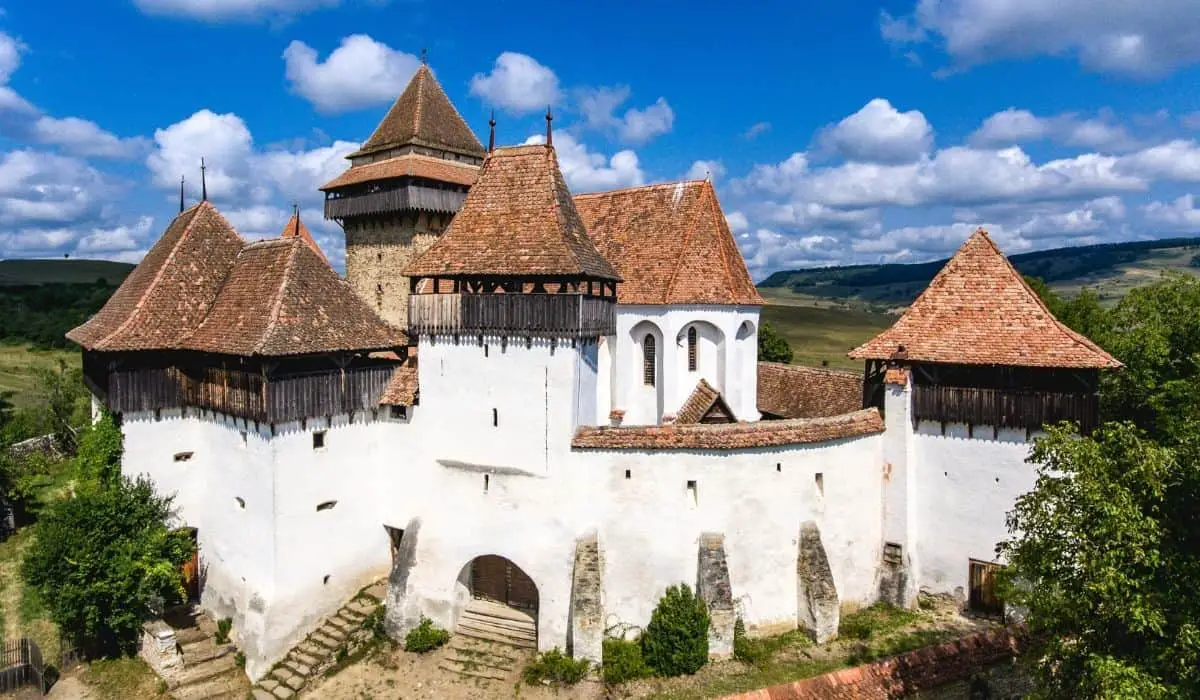
The village of Viscri is among the best-preserved and most visited villages in all of Transylvania. A number of documentaries on Romania feature Viscri, which only adds to its touristic appeal.
Over the course of the past few years, Viscri was involved in an immersive local project of traditional and cultural revival. This resulted in Viscri being almost like a real-life open-air museum. Romanian traditions from the past are rediscovered in the present and are once again an integral part of daily life.
The Szekeler population built the gorgeous, white fortified church of Viscri early in the 12th century. Local Saxons took it over shortly after. The addition of fortified walls and watch towers didn’t come until the 16th century, and in the 18th century the Saxons built a second wall.
Hours & Admission:
10:00 – 13:00, 15:00 – 18:00 (Monday – Sunday)
5 Lei ($1.20 USD)
As with Prejmer, the woman who oversees the property lives right across the street from the gate (#141), and is usually quite accommodating with guests wanting a tour in the off-hours.
Driving distance to Dârjiu: Approximately 1 hour, 15 minutes
3. dârjiu
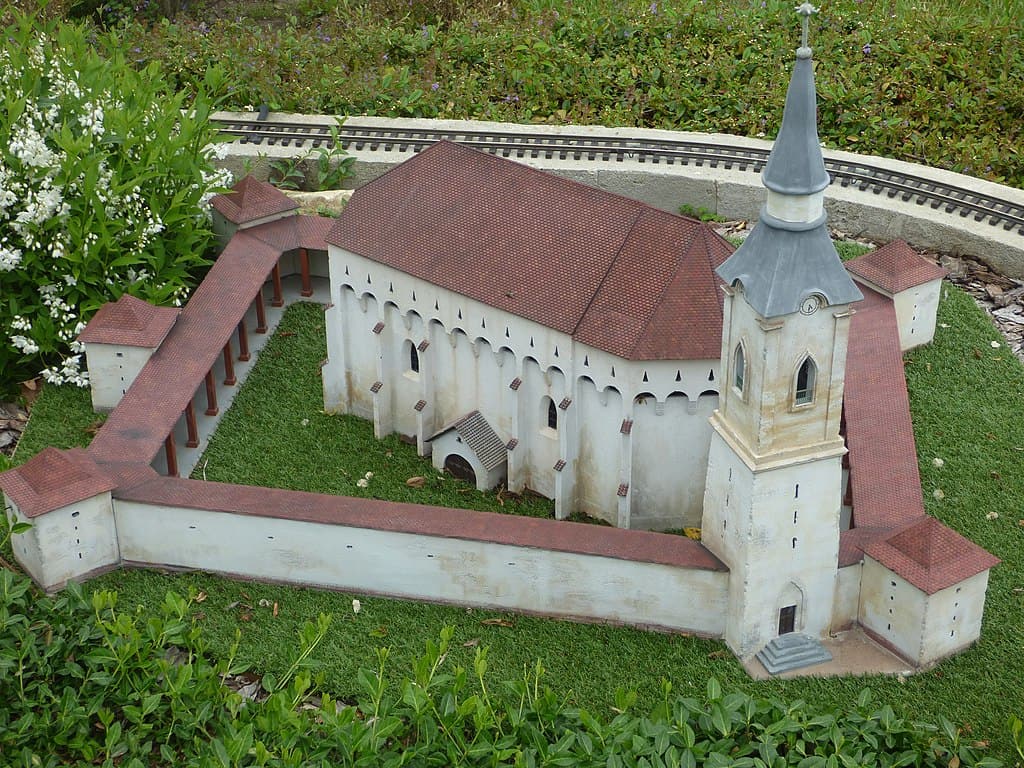
One of the lesser known fortified churches of Transylvania is in the village of Dârjiu. The church was first built in the 14th century, but was rebuilt shortly after in the Gothic style. It joined its neighbors in adding fortifications in the 16th century.
While not as well-known, the fortified church at Dârjiu is still as stunningly beautiful as the rest. Among its specialized fortification features include openings in the Gate Tower for shooting missiles and a thick defense wall around the church. The wall wasn’t quite as high as some of the other fortified churches, likely due to the fact that the village of Dârjiu is well-positioned on a hilltop. Not much of the wall remains today.
One fun fact about the fortified church at Dârjiu is that the current residents still store their grain, bacon, and ham in the fortress and its towers! Be sure to head inside to see the gorgeous painted frescoes and altars – one of the true highlights of Dârjiu.
Hours & Admission:
Closed during religious services on Sundays; no real set hours.
6 Lei ($1.50 USD)
Driving distance to Saschiz: Approximately 40 minutes
4. saschiz
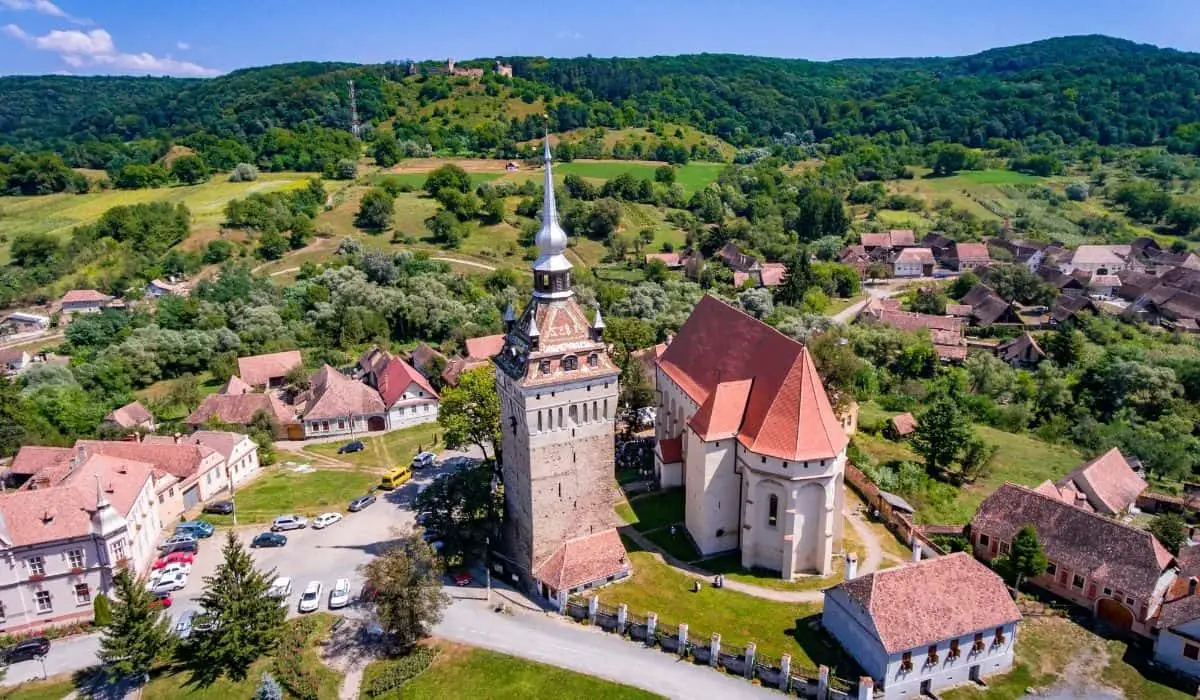
Saschiz is a colorful village, one of my favorite places to drive through when we are road tripping around the country and on our way back home. From the road, you can clearly see the jaw-dropping fortified church, dedicated to Saint Stephen of Hungary.
The fortified church is taller than most of the other six. Its fortified wall no longer remains, but a small iron and stone fence marks the layout of its original location.
It has an ornately decorated, looming tower, which is undoubtedly its most impressive feature. Besides the tower, there are no other defensive components remaining. Still, it is a sight to behold!
Saschiz itself has plenty to do, particularly if you want a taste of local customs and traditions. Rent a bike, enjoy a leisurely cheese tasting, try your hand at beekeeping or bread baking, and of course, take plenty of photos.
Hours & Admission:
Closed on Tuesday
10:00 – 18:00 (Wednesday – Monday)
6 Lei ($1.50 USD)
If arriving via public transportation, your best option is to take a taxi from Sighișoara; Saschiz train station is about an hour’s walk from the church.
Driving distance to Biertan: Approximately 50 minutes
5. biertan
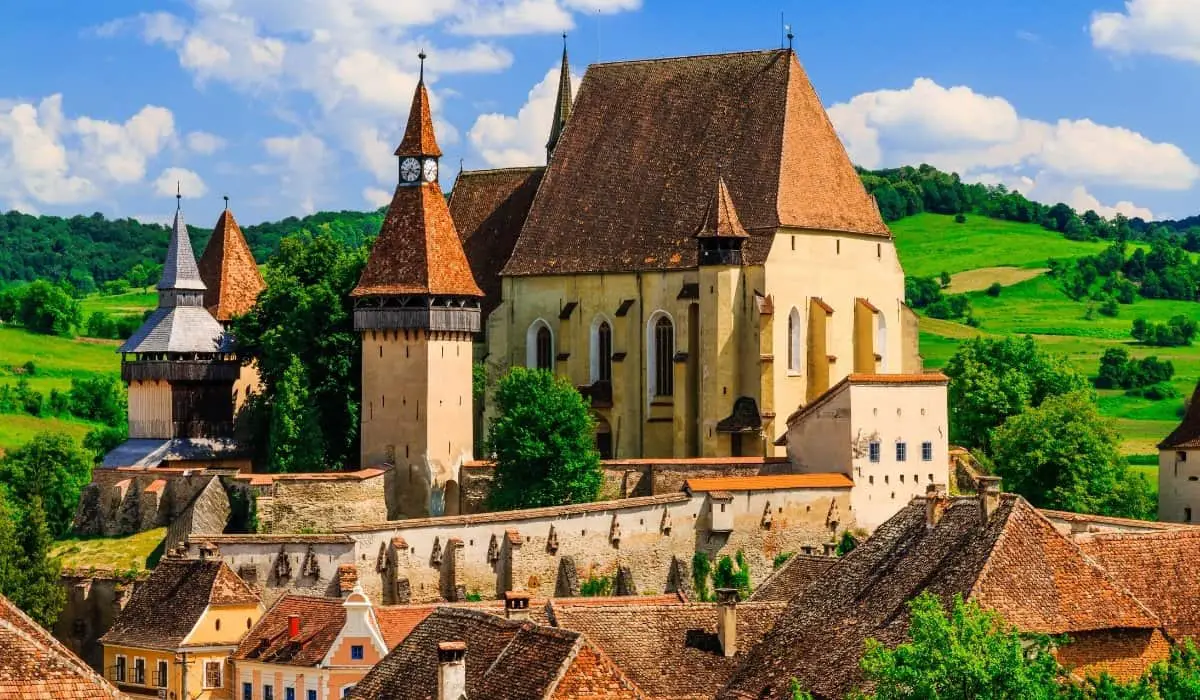
Biertan is definitely among the most popular of the fortified churches of Transylvania. It’s not surprising, given the fact that Biertan was once among the most important Saxon religious centers in Transylvania for nearly 300 years. From the 16th to 19th century, it actually served as the seat of the Saxon Evangelical Bishops of Transylvania.
The church’s notable fortifications include tall defensive walls, towers and gates which encircle the complex. The entire fortified structure is high on a hill in the center of the village. There are a number of towers you can admire from the outside, not open to the public. Do check out the aptly named Prison Tower, which actually served marriage counseling purposes. When a married couple was on the brink of the end, they would have to spend two weeks in the Prison Tower, after which they would reconcile or end things.
The Catholic Tower is definitely worth a stop. Here, you’ll find beautifully-preserved portions of frescoes from the pre-Reformation era, which was quite rare, considering that in Saxon Transylvania, Protestantism replaced Catholicism.
The village of Biertan is part of what makes this one of the most popular fortified churches in Transylvania to visit. Its picture-perfect landscape and easily-accessible bike paths make it a great place to explore.
Hours & Admission:
Closed Mondays & Public Holidays
10:00 – 13:00, 14:00 – 19:00 (Tuesday – Sunday)
10 lei ($2.40 USD)
The groundskeeper locks the gates in the winter. However, if you go to the restaurant next door, they can usually find the person with the keys.
Driving distance to Valea Viilor: Approximately 40 minutes
6. valea viilor
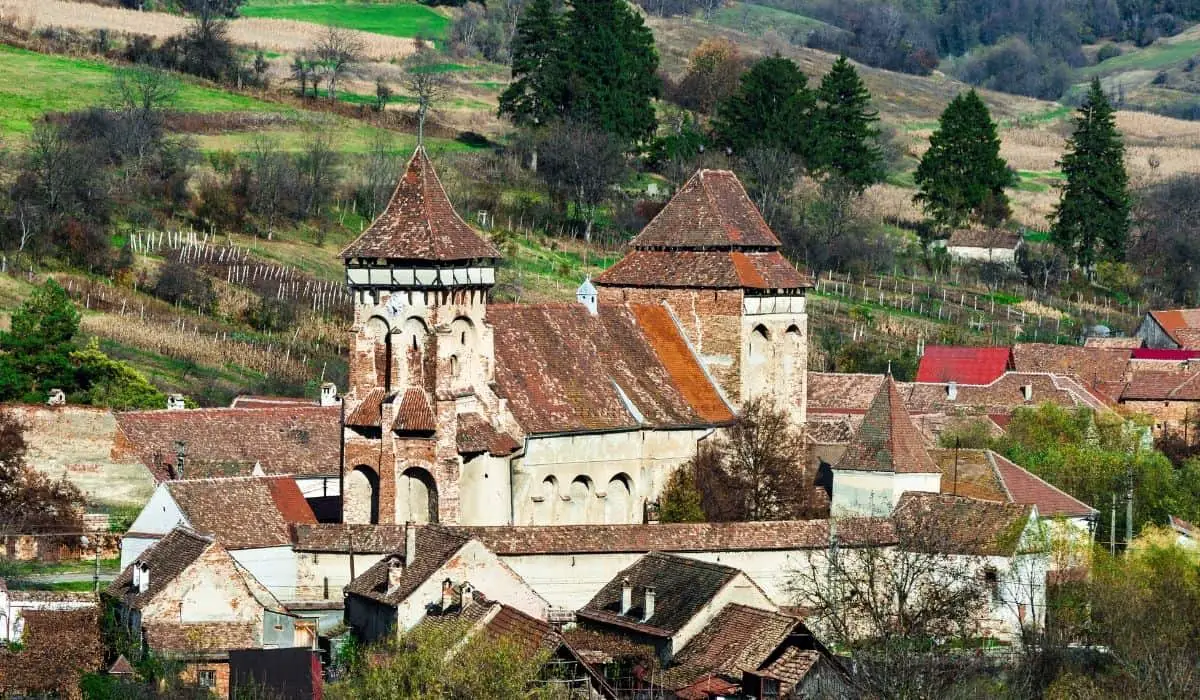
Valea Viilor is an immense, rather plain stone church. Unlike the fortified church at Biertan, which is technically a stronghold built around the church, Valea Viilor is an actual fortified church. Its outer façade is pretty menacing, lacking the elaborate decorations, frescoes, or carved details that the others have.
In lieu of windows, you’ll find arrow slits for defense. The thick walls are fortified with battlements and parapets, with tall brick towers used for observational purposes. The walls are also where you can find many storerooms, where the villagers would keep their supplies to endure long sieges. The villagers prepared for a long siege. In fact, there is actually a deep well inside the church to provide them access to fresh water.
Hours & Admission:
9:00 – 12:00, 14:00 – 17:00 (Monday – Sunday during summer months)
5 lei ($1.20 USD)
If you want to visit outside the traditional tourist season, call or email in advance to arrange a visit.
Driving distance to Câlnic: Approximately 1 hour, 20 minutes
7. câlnic
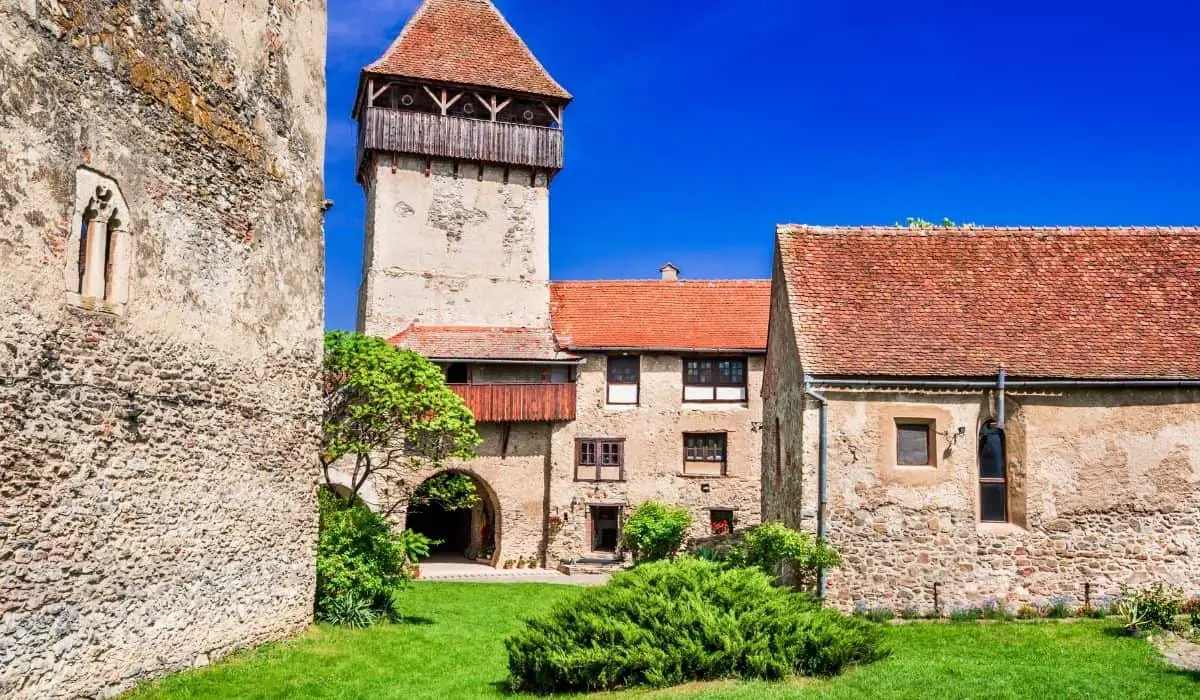
The fortified church of Câlnic is different from the other six in that it was initially built as a private residence. It originated as a small castle with a tall keep, enclosing walls, and towers. A moat surrounded the entire fortification, common to other similar buildings of the 13th century.
Câlnic continued to serve as a private residence until the 15th century, when it was sold to villagers and subsequently turned into a type of safehouse that could withstand Ottoman sieges. The villagers further fortified the church, adding height to the existing walls and storage rooms to the interior. Eventually, a second fortified wall replaced the moat. They also raised the tower by two levels.
Today, the tower is home to an ethnographic and medieval art museum. The towers offer great panoramic views if you’re willing to make the climb!
Hours & Admission:
10:00 – 17:00 (Monday – Sunday in Winter)
9:00 – 19:00 (Monday – Sunday in Summer)
5 lei ($1.20 USD) – If you plan on taking photos, there is an extra 7 lei camera fee.

